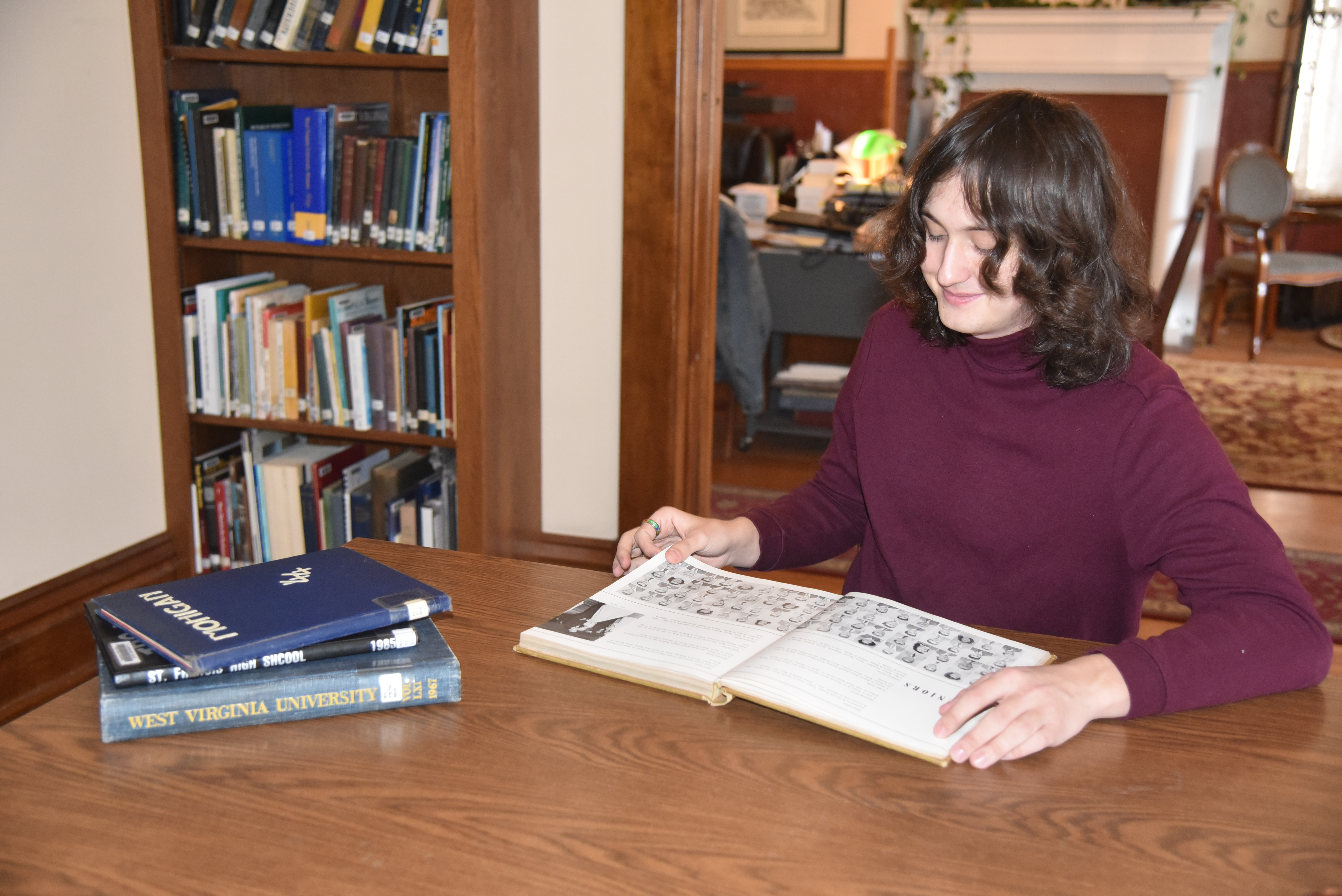A Trip Down Memory Lane: Yearbooks at the Aull Center

Why do we hold on to yearbooks?
This question may seem to yield a simple answer: to remind us of days gone by, and of friends (or foes) of the past. For many, such sentimental tokens serve this purpose well enough so as to remain in a box in the attic somewhere, or (if it’s one of the lucky ones) on a shelf. Within families, perhaps it is a discovery to be made every generation or so, providing a glimpse into a time when relatives navigated youth and bygone eras.
It is to these bygone eras that I now turn our attention.
The work of a historian is to keep their finger to the pulse of antiquity. Metaphors are often used to describe how this work is remembered and appreciated — images of waves and ripple effects are employed to evoke a sense of continuity of past events flowing into present experiences. Across history, there is perhaps no demographic group whose ‘ripple effects’ are more pronounced than the youth of a given generation. Young adults and children generally constitute some of the most outspoken members of society, whose support or criticism of the status quo often become an era’s defining characteristic. To understand the youth of society, past and present, is to understand its trajectory and its spirit. What better way to engage in this subject matter than by exploring the print material that they produced about themselves?
Yearbooks contain a wealth of information, both consciously and subconsciously produced by their editors and subject matter. The portraits contained within demonstrate fashion trends such as how young people dressed to how they wore their hair — from denim jackets and long hair to short cuts and formal dress, these all show us what was expected of them. Information regarding clubs and student activities reveals the kind of interests that were popular at the time in that environment. Language clubs, robotics teams, student government, and how such organizations changed or evolved over time reflect societal developments and contemporary concerns. Eventually, the study of Latin and Greek gave way to Spanish and French. The number of ROTC members (and its former compulsory participation in many universities) in roughly the first half of the twentieth century makes sense when one considers contemporary conflicts like the World Wars and the Vietnam War. That this changed following backlash against the Vietnam War is unsurprising.
All of these changes and more can be traced through materials like high school and college yearbooks. To the curious mind, they may even raise some questions. Which languages interested students over time, and why? What are these oddly named clubs, and do they still exist? What did they do?
Perhaps some of these questions have no answers, and there is always the chance that those with answers prove underwhelming to inquirers. But for those who seek to understand history’s youth, something like a yearbook collection in a local history center can prove a bountiful resource.
At the Aull Center for Local History & Genealogy Research in Morgantown, we house a collection of yearbooks ranging from local elementary schools all the way through to the university level (you read that correctly—WVU used to publish a yearbook, and we possess dozens of them). Perhaps you are interested in finding a relative from MHS’ class of 1965, or maybe you are curious to see who all attended the gone (but not forgotten) Sabraton Junior High School in 1975. Whatever the case may be, the Aull Center is a great resource for those interested in learning about the rich history of our region’s youth.
by Riley B., researcher at the Aull Center for Local History & Genealogical Research, Morgantown Public Library System